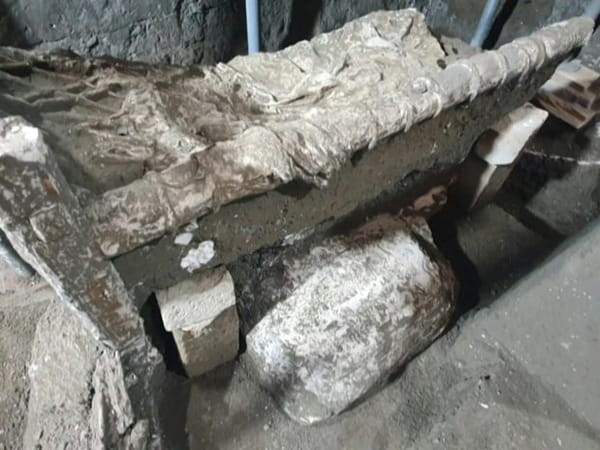For decades, excavations have been carried out in Pompeii. Recent discoveries reveal the terrible living conditions of slaves.
Archaeological digs often reveal surprising details about the lives of people in the past. This is the case in Pompeii. The ancient city was buried in AD 79 under meters of ash, mud and lava during an eruption of Vesuvius, quickly killing its inhabitants.
Excavations have been taking place in the area for decades. Researchers have recently uncovered well-preserved rooms where slaves likely lived, with some impressive finds. Archaeologists examined a room of about 16 square meters located 600 meters outside the city walls. It contained three beds, vases, a few amphoras and a box containing harnesses for horses. According to researchers, at least three slaves slept in this room. Their beds were made of wooden slats stretched with ropes, on which rested fabrics or carpets. Only one bed had a mattress. It should be noted that the beds had different sizes. Two were about 1.70 meters long, the third 1.40 meters. A child or a small person would have slept there.
What is surprising, according to the researchers, is the absence of bars on the windows or locks on the doors. This raises the question of how slaves were controlled in Pompeii. “It seems that there were no impassable physical barriers preventing the slaves from escaping from the villa, so there must have been other control mechanisms”, write Gabriel Zuchtriegel and Chiara Corbino.
And the most macabre find is the remains of two mice and a rat. These bones were found in amphoras under the beds of the slaves. Even though house rats were common at the time, they had only been found in other regions. “These remains suggest that the domestic rat was already common in the Pompeii area in the first century AD,” the archaeologists note.
“These details once again underline the conditions of insecurity and poor hygiene in which the lower classes of society lived at that time,” writes the Italian Ministry of Culture. These discoveries offer new details about hygiene, disease control and living conditions in Pompeii, elements “not to be underestimated”, insist the researchers.

